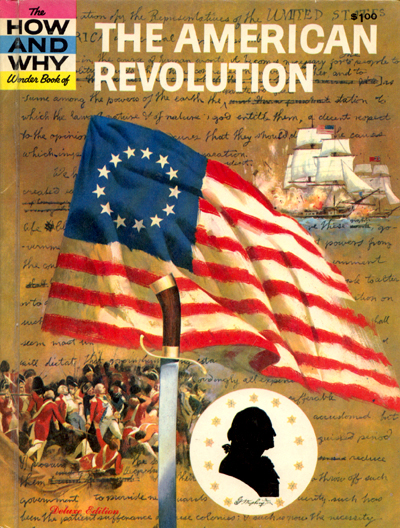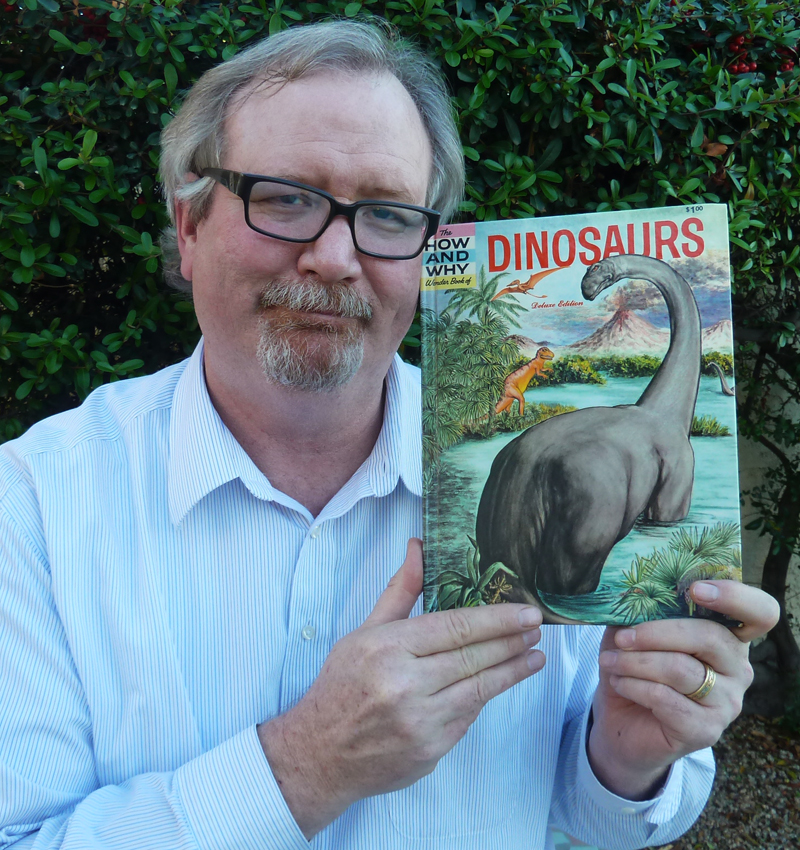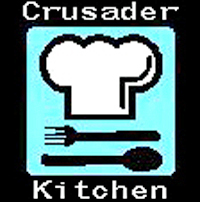|
Page A4 The Joan De Arc Crusader / Wednesday, December 25, 2013 Front Page A1 / Editorials A2 / Buekers A3 / Crossword A5
The wondrous How and Why Wonder Books By J. Bueker Nothing defined my childhood experience more memorably than the books I owned and read and loved. I had eclectic
tastes for sure, devouring science books, history books, art books, children’s
fiction, comic books and Mad paperbacks all with equal relish. Everyone in our
family loved to read, and our routinely stingy parents made regular financial
exceptions when it came to expenditures for literature in its sundry forms.
While I read just about everything that came my way, I early on developed an
enduring fondness for a certain series of educational children’s books published
by Grosset & Dunlap in the 1960s. As I think back now, I realize that almost all my How and Why Wonder Book stories happen to involve my mother in some fashion or another, which I suppose is unsurprising given her exemplary encouragement of her children’s reading habits. Plus the fact that she was the one who took us shopping. Well the whole thing began at the Westown T.G.&Y. Browsing the store merchandise with Mother one afternoon in I’m guessing 1965, I happened upon a very cool book on dinosaurs, a subject in which I was just beginning to develop an avid interest. The cover of the book was dominated by the image of an incredibly cool brooding Brontosaurus, obviously designed to attract the attention of a youthful lad such as myself and deliver me book-in-hand to the nearest cash register. As with comic books, these book covers were the hook by which each young customer was caught, and so they were very carefully conceived and designed. With little difficulty I persuaded Mother to buy it for me. When it came to books, she was generally a pretty soft touch, after all. But we quickly perceived that this wonderful dinosaur book was but one of a whole series of educational books and in fact the very first volume of that series. That the first How and Why book would be devoted to dinosaurs was testament to the fascination for the terrible lizards that was taking flight among American kids during this period. In very short order, I set my sights on possessing more of these wondrous books. I was officially hooked. The How and Why Wonder Book series was launched in 1960 and edited under the supervision of Dr. Paul E. Blackwood, who headed the Office of Education at the U.S. Department of Health, Education and Welfare. Each volume opened with a brief yet comprehensive introduction to the subject matter written by Dr. Blackwood himself. Originally conceived as a series of science books for young readers, the How and Why books would ultimately encompass topics in history, geography and the arts as well. Each volume was precisely 48 pages long and featured elaborate hand-drawn illustrations – no photographs. The question and answer format of the How and Why books was a clever means of organizing and conveying the content to young readers, exploiting the natural inquisitiveness of children. For easy reference, the table of contents listed all of the questions that would be posed and answered in each book, along with the page number where each specific dialogue could be located. Significantly, the books were available in two forms: the standard soft cover edition, which sold for 50 cents, and the highly desirable hardcover “Deluxe Edition,” which cost a whole dollar. Coincidentally, half a buck just happened to be the precise amount of my bi-weekly allowance at that time, and so for the next few years, my precious allowance money went almost exclusively toward the acquisition of How and Why Wonder books. This proved to be a very wise investment. One of the first things I learned from Mother about purchasing these books was that their status as an educational publication meant that by state law, no sales tax could be affixed to the final sale price. Hence, the soft cover How and Why books should always cost me precisely 50 cents, and the deluxe editions exactly one dollar. Not a penny more. This quaint legalism was put to the test on a memorable visit to Westown Shopping City not long after I started collecting the How and Whys. Arriving at the shopping center, I was promptly dispatched to A.J. Bayless with two shiny quarters in my pocket for the purchase of my latest How and Why volume, it being allowance day and all. Such was the popularity of the books that they were by now available at both the Westown grocer as well as the T.G.&Y.five-and-dime. Much to my dismay, the sadly misinformed checkout lady rang up my purchase as a taxable item, and proceeded to demand of me 52 cents. Unable to produce this unexpected sum for the book, I left Bayless in tears, traumatized and confused by such an unexpected calamity. Sympathetic as always, Mother immediately escorted me back to the grocery store where she patiently explained the nuances of Arizona tax law to the apologetic checker. I triumphantly strode out of Bayless with my new How and Why book in hand, crisis averted. Thanks, Mom. The deluxe
edition How and Why volumes were a marvelous luxury and a bona-fide status
symbol among young collectors of the books. I usually had to settle for the
cheaper soft cover editions of course, but on a few golden occasions I was
treated to the ultimate How and Why books, which could be found at larger
department stores like Milt’s and Globe Shopping City. The first hardcover How
and Why that I remember acquiring was “The American Revolution,” which my
parents bought for me when in an exceptionally generous mood one Sunday
afternoon at the Globe on 7th Ave. and Camelback. It was a beautiful
volume; I always treasured that book. A nice selection of the hardcover How and Whys could also be found in the Sahuaro School library, enabling me to borrow certain of the books and preview them in advance of making a purchase at the store. Interestingly, volumes like “Wild Animals” and “Planets and Interplanetary Travel” were exceptionally popular with Sahuaro students and almost perpetually checked out. It was also at Sahuaro, incidentally, that I sadly parted ways with my beloved How and Why Wonder Book of Dinosaurs. At the conclusion of my 5th grade year in Miss Eden’s class, I inadvertently left behind several books that I had brought in for our class discussion of dinosaurs and other prehistoric beasts that school year. Among these was my original How and Why copy of “Dinosaurs.” By the time I realized what had happened, it was gone forever. I wonder if my book is still out there somewhere, having miraculously survived the years. Ultimately, the How and Why Wonder Book library broadened the entire scope of my academic interests, an inevitability once I set my sights on collecting the entire series. After all, it’s unlikely I would have ever taken much interest in subjects like mushrooms, railroads or ballet, had there not been How and Why books encompassing such subject matter. On the other hand, there were a few elusive titles that I never did locate, like “Electronics” and “The Old Testament.” Perhaps this may help explain my relative technological and theological ineptitude. After I departed for college in 1976, my How and Why collection was apparently dispersed among my sister Sue’s children, without my knowledge or consent, naturally. After all, of what use would such juvenile literature be to a young adult, now bound for his university studies? I did manage to salvage a few of those original volumes, which now reside in my current and quite comprehensive library of How and Why Wonder Books, assembled over the years primarily from thrift store acquisitions, antique stores, and of course, the all-powerful eBay. And yes, I still on occasion break them out and read them. After all these years, “Dinosaurs” remains my favorite. One day in the early 1970s, as I was enduring the insecurities of puberty, Mother and I were shopping at some department store in town when I noticed they had an exceptional selection of How and Why books on display in their book department. Impressed by this, I happened to mention it to Barbara, and her response took me rather by surprise. “Aren’t you getting a little old for the How and Why books now?” she curtly inquired. I was a bit taken aback by this remark, but finally mumbled some sort of vague assent to her observation. Well, at the age of 55, I can now deliver the definitive reply to this long-ago question. No, dear Mother, I am not too old for the How and Why Wonder Books. And never shall I be.
Shish kebab at the Buekers By J. Bueker
The grub my siblings and I enjoyed growing up on Joan De Arc was nutritious, plentiful and usually pretty tasty, but relatively mundane. I maintain to this day that my mother was an underrated cook, but her fare usually took the form of your typical traditional dishes like spaghetti, meat loaf, fried chicken, pot roast and so forth. Yet every once in a blue moon, Bueker cuisine drifted into the exotic, and there is no better example in my recollection than the evenings when Carl Bueker fired up the backyard barbeque coals and grilled glistening skewers of succulent meat and vegetables in his very own version of the middle-eastern dish popularly known as shish kebab. These were memorable meals at 3219.
Bueker-style shish kebab 2lbs. of lean beef chunks, preferably filet, but at the Buekers usually not Package of instant meat marinade, preferably cheap generic brand Can of miniature onions 2 large green bell peppers 1 carton cherry tomatoes 1 carton fresh whole mushrooms.
Thoroughly pierce the meat with a fork and place in a dish containing the marinate sauce on kitchen counter and just let it sit there for a few hours. Drain water from canned onions. Cut peppers into chunks of desired size and place on a plate alongside tomatoes and onions. Prepare bobs by placing food items on skewer in random, alternating patterns. Cook over coals until meat is brown and veggies appropriately seared. Serve immediately.
No Bueker barbeque night was complete of course without the customary marshmallows stuck on the end of unwound metal clothes hangers, slowly toasted and melted over the fading red charcoal embers. The treat of treats! ____________________________________________________________________________________________________________________ JDA
|


